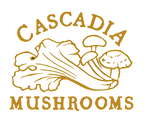Mushroom Science Projects For Kids
You know how it goes. Your kiddo is assigned a science project, and they have no idea what to do. Do you wait two weeks and then struggle through a last-minute project with them? Avoid the frustration and tears with a little planning and a mushroom grow kit!
There’s a Lot of Science in Mushrooms!
Mushrooms are fascinating! A colony of living hairlike structures called mycelium, they develop the mushroom, or fruiting body, only when it’s time to reproduce. They have environmental remediation properties, which means they can take up carbon-based pollutants from the substrate that they’re growing on and remove them from the environment. Mushrooms have rich and complex nutritional profiles, and occupy an indispensable niche in their ecosystems; the decomposer! Even the mushroom lifecycle is interesting; it’s different from both plants and animals, and fun to study.
There are so many different scientific topics that apply to mushrooms that no matter what your kiddo’s interest, mushrooms can provide interesting and engaging lessons!
Growing Mushrooms is Fun

Unlike some other scientific projects, growing mushrooms is fun! The mushroom grow kits produce a harvest faster than most plants. The mushrooms grow quickly from pinheads to fully mature mushrooms, so they’re actually fun to watch grow from day to day and can capture any kid’s imagination.
There’s a certain satisfaction in watching something that you nurture grow, and mushroom kits give that satisfaction readily.
Growing a mushroom kit doesn’t take a lot of work, either, so it’s a big return on just a little effort.
Growing Mushrooms is Appropriate For All School Age Children
While younger kids may need a little help, easier mushroom grow kits can be managed by school aged children. All you need is the right spot and a spray bottle for misting them and a plastic bag for a humidity tent! Our blue oyster mushroom grow kits, our cosmic queen oyster mushroom grow kits, and our shiitake mushroom grow kits are all rated as “beginner” difficulty, so these are a little forgiving and are great options for kids.

Be sure to help your kids if the kit requires any cutting with sharp tools!
In spring and fall in mild climates, your mushroom grow kit can even be grown outdoors in a shady spot.
Some Ideas for Mushroom Science Projects
Compare Environments
Get two mushroom growing kits of the same type and change their growing environments slightly. The main factors in mushroom growth are humidity, light, and airflow. You can try changing the amount that one kit is misted, change the amount of sunlight that one kit gets, or change the amount of airflow one kit gets. The kit that gets different conditions is the experimental kit. Hold the other kit in ideal conditions as a control and watch to see what happens! Remember, only change one factor at a time to get the best data possible! Does this change the number of mushrooms that grow? Does it change the distribution of mushrooms on the block? Do the mushrooms on the experimental kit look different? Record your observations!
Describe and Identify Mushrooms
While you already know what kind of mushrooms your kit will grow, you can work through the process of identifying mushrooms using your kit. Photograph or draw your mushrooms as they go through different stages of growth, and demonstrate how to use the following techniques to identify mushrooms:
Practicing these mushroom identification techniques is fun and interesting, and doing them with home-grown mushrooms helps you understand if you’re doing it correctly. You can also find a wild mushroom (during the fall or the spring) and compare your observations between your home grown mushrooms and the wild mushrooms!
Please note: Wild mushrooms should never be eaten without a 100% positive identification!
Those are just a couple of ideas for mushroom science projects; use your imagination! Be curious! Ask questions, and see if your mushroom grow kits can help you answer them! Mushrooms have a lot to teach us about their lifecycle, their ecosystem, and the global environment. But most of all, have fun!



